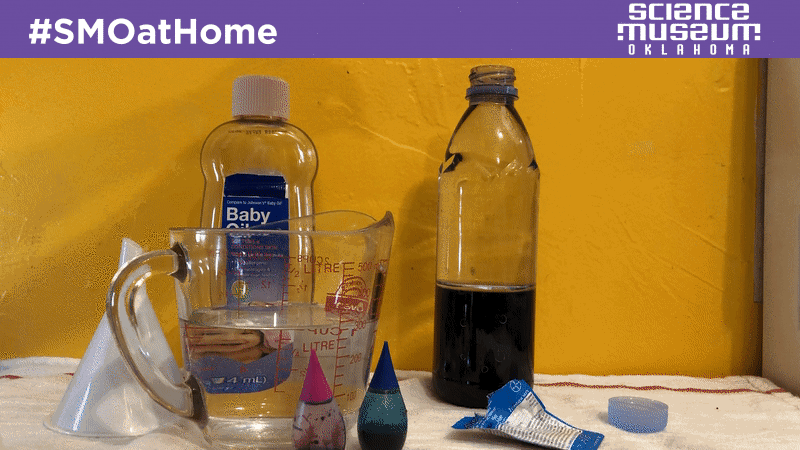Lava-Less Groovy Chemical Reaction
Did you catch our ocean motion in a bottle #SMOatHome this week? With one addition you can use the same supplies to make a lava-less (but still groovy) chemical reaction! Let’s get started.
Gather a few supplies:
- A bottle, or really any clear tall and narrow container
- Oil—vegetable oil, coconut oil, baby oil, whatever you have around will likely work
- Water
- Food coloring
- A fizzing antacid tablet (usually taken for an upset stomach)
Let’s go!
1. Fill your bottle or clear container about one-third full of water. If you’re reusing your ocean motion in a bottle, you’ll want to empty some of the liquid out.
2. Add a few drops of food coloring — you'll want to make the water dark in color.
3. Fill your bottle the rest of the way with oil leaving a little room at the top. (There will be mess later if you fill the bottle too full.) Notice how the oil and water don’t mix. Which one floats on top?
4. Break your fizzing tablet into several small pieces.
5. Drop one small piece of the tablet into your container. Watch as it falls to the bottom, then watch the reaction! You can keep adding bits of the tablet to keep the chemical reaction going.
What’s happening:
The oil floats on the water because it’s less dense. The two liquids don’t mix because the water molecules are attracted to themselves but not attracted to oil molecules. We call this immiscible.
When the tablet is dropped into the oil and water, it sinks to the bottom because it's more dense than both of the liquids. When the tablet reaches the bottom, it begins to dissolve. Sodium bicarbonate and citric acid inside the fizzy tablet react with the water creating bubbles of carbon dioxide.
The gas and water mixture is less dense than the water around it and even less dense than the oil above. Because the water is attracted to itself but not at all to the oil, the water and gas bubbles move through the oil shaped like little balls. When it reaches the top, the bubbles burst, and the carbon dioxide escapes to the air above. The water then sinks back down to the bottom because it's more dense than the water.
Just for fun, shine a light through the bottle to show off the beauty of the chemical reaction. Take a picture or a short video and share it with us using #SMOatHome!




